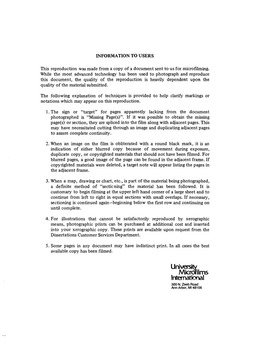| dc.contributor.author | Brown, Charles Stephen, | en_US |
| dc.date.accessioned | 2013-08-16T12:28:53Z | |
| dc.date.available | 2013-08-16T12:28:53Z | |
| dc.date.issued | 1983 | en_US |
| dc.identifier.uri | https://hdl.handle.net/11244/5108 | |
| dc.description.abstract | The interpretation developed here is partly a defense of Husserl's theory of meaning against some recent work in the theory of meaning by philosophers such as Saul Kripke and Hilary Putnam. It is widely accepted that the work of these and other philosophers clearly show that it is a mistake to conceive of meanings as abbreviated or disguised descriptions which individuate objects and thereby denote those objects. This motif remains in the background until the final chapter where Putnam's arguments designed to show that intensions (meanings) do not determine extension are examined. There it is shown that the interpretation of Husserl's theory of meaning developed in the penultimate chapter does not fall prey to Putnam's arguments. | en_US |
| dc.description.abstract | An influential interpretation of the noema, offered by Dagfin Follesdal, takes the noema to be properly understood on the model of Fregean Sinn, which in turn has been widely interpreted as being a definite description. Against this interpretation the similarities and differences between linguistic and non-linguistic meanings are sorted out. According to the account of the noema given in Ideas I, the noema has two components: a determinable X and a set of predicate senses. The interpretation offered seeks to show that the determinable X often functions as an indexical element, thereby securing reference for linguistic meanings and individuating objects of non-linguistic meanings, viz., perceptual meanings, without an individuating description. In the final chapter the distinction between the determinable X and the set of predicate senses is exploited to suggest a general theory of de re and de dicto intentionalities. | en_US |
| dc.description.abstract | This work is an attempt to provide a critical interpretation of Edmund Husserl's theory of noema. It is the concept of noema which allows Husserl to develop a comprehensive theory of intentionality. This theory, once fully developed, provides a general model of the role of mental representations in the philosophy of language and mind. According to this view, each mental act is intentional, i.e., directed in the specific manner that it happens to be, in virtue of a noema correlated with that act. Fundamental to this theory is the view that the noema is a meaning which directs the act whose noema it is towards some object. Thus Husserl has extended the notion of meaning from its linguistic context to the field of all mental acts. | en_US |
| dc.format.extent | 171 leaves ; | en_US |
| dc.subject | Religion, Philosophy of. | en_US |
| dc.title | Linguistic and non-linguistic meanings : an interpretation of Husserl's theory of noema. | en_US |
| dc.type | Thesis | en_US |
| dc.thesis.degree | Ph.D. | en_US |
| dc.thesis.degreeDiscipline | Department of Philosophy | en_US |
| dc.note | Source: Dissertation Abstracts International, Volume: 44-02, Section: A, page: 0512. | en_US |
| ou.identifier | (UMI)AAI8314758 | en_US |
| ou.group | College of Arts and Sciences::Department of Philosophy | |
